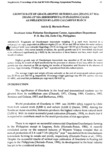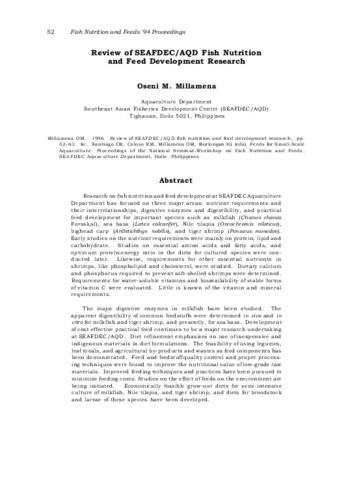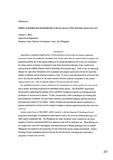Food consumption of seaperch, Lates calcarifer, in captivity.
- Global styles
- MLA
- Vancouver
- Elsevier - Harvard
- APA
- Help
View/Open
Date
1989Author
Page views
1,453ASFA keyword
AGROVOC keyword
Taxonomic term
Metadata
Perlihat publikasi penuhShare
Abstract
In the Philppines, feeds and constitutes some 70% of the total capital cost in aquacultural, which illustrates the central ipmortance of such inputs and at the same time justifies a major research effort to study the field of nutrition, feeds, and feeding. Given a nutritionally adecquate food, it is necessary to examine whether environmental condition (e.g., water temperature, oxygen , etc.) allow fish to efficiently use the food for growth to ensure a profitable yield. If yioeld is as central to aquaculture as growth is to fish, then the improvement of fish yield in aquaculture should benefit from the fundamental understanding of environmental control of fish growth. In tropical aquaculture where high temperature are the outstanding characteristics, it is worth consideriing whether such temperatures favor efficient fish production. Since temperature increases the rate o metabolic processess in fish, the energetic cost of this elevated metabolic activity may be considered in competition with growth for a share of the energy derived from the food (Brett, 1979). These interacting factors of food (intake and ration) and temperature and their effects on fish growth should be thoroughly studied if an economicaly vaible management is desired.
The present research project focussed on research (Lates calcarofer) aquaculture by using the bio-energetic concept following the models of weel studied species such as perch, Perca fluviatilis (Solomon & Brafield, 1972); sockeye salmon, Oncorhynchus nerka (Brett, 1979); brown trout, salmo trutta (Elliott, 1972; 1975a; 1975b; 1976; 1982), and the African catfish, clarias gariepinus (Hogendoorn, 1983; Machiels & Henken, 1986). This, being a long term goal connat be attained before basic variables will have been studied. The immediate aims of this research project era, therefore, (1) examination of feeding rates and food consumption of the seaperch in relation to body size and temperature, and (2) determination of growth rate in relation to temperature and ration size.
This study will be conducted over a 3-years period. Firstly preliminary trials on feeding rates and food consumption by individual seaperch will be carried out to determine minimumand maximum rations. Subsequently experiments studying the relation between temperature, ration (starvation, maximum, minimum) and growth will be conducted. Variables and parameters to be investigated durig the experiment will concentrate on body size, body composition, composition of growth increment,tempereture and metabolism (oxygen consumption).
Type
Conference paperKoleksi
- Conference Proceedings [298]
Related items
Showing items related by title, author, creator and subject.
-
Growth rate of Gracilariopsis heteroclada (Rhang et Xia) Zhang et Xia (Rhodophyta) in floating cages as influenced by Lates calcarifer Bloch
Hurtado-Ponce, Anicia Q. (Philippine Council for Aquatic and Marine Research and Development, 1994)Fragments of Gracilariopsis heteroclada weighing 10 g each were inserted in a polypropylene rope, suspended at different depths (25 cm, 50 cm and 100 cm below the water surface) and cultured with Lates calcarifer fingerlings ... -
Review of SEAFDEC/AQD fish nutrition and feed development research
Millamena, Oseni M. (Aquaculture Department, Southeast Asian Fisheries Development Center, 1996)Research on fish nutrition and feed development at SEAFDEC Aquaculture Department has focused on three major areas: nutrient requirements and their interrelationships, digestive enzymes and digestibility, and practical ... -
Studies on breeding and seed production of the new species of fish with high commercial value
Marte, Clarissa L. (Japan International Research Center for Agricultural Sciences, 2001)Aquaculture contributes significantly to food production and provides the means to generate increased revenue for countries in Southeast Asia. As the catch from the capture fisheries stagnate and population growth rate in ...





